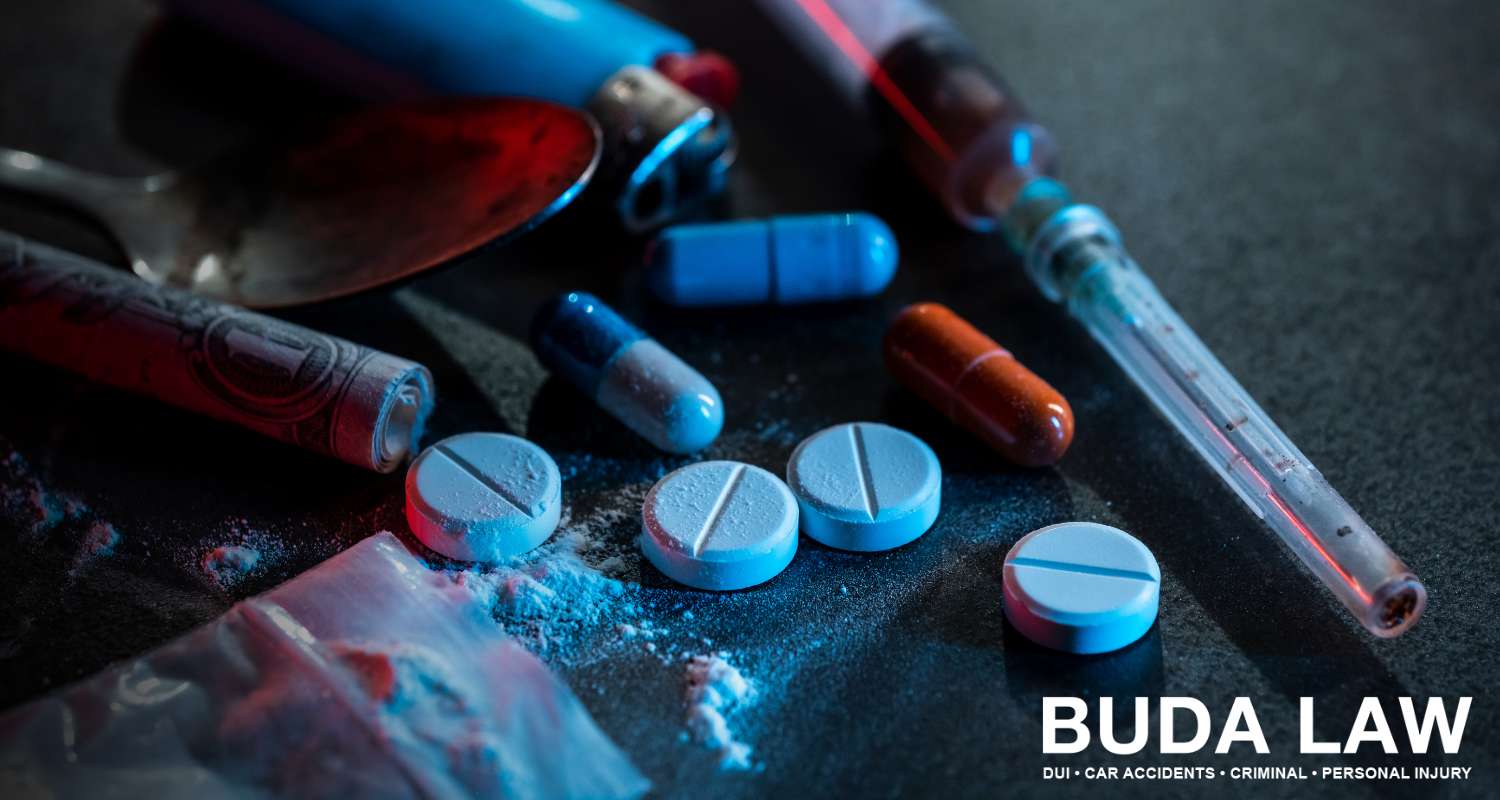
Drugs affect the human body in vastly different ways—some may act as powerful sedatives, while others can cause intense stimulation or even dangerous hallucinations. Because of these varying effects, certain drugs are associated with harsher penalties when it comes to drug crime convictions. But how are these drugs classified, and how does the law interpret these classifications when determining penalties for drug-related crimes?
In the United States, the Drug Enforcement Administration (DEA) enforces what is known as the federal Controlled Substances Act, which classifies drugs into different schedules based on their potential for abuse, accepted medical use, and safety. Understanding these drug schedules is crucial for anyone facing a drug charge, as the schedule of the drug involved can significantly impact the severity of the charge.
If you or a loved one is dealing with a drug-related offense in Florida, having an experienced Tampa drug crime lawyer like Andrew Buda in your corner can make a critical difference in your case. Call (813) 322-2832 to speak with an experienced attorney at Buda Law regarding your case, or read on to learn more about the federal drug schedules.
What are Controlled Substances?
A controlled substance is a drug or chemical that is regulated by law due to its potential for abuse, addiction, and harm. These substances are classified into different schedules under the Controlled Substances Act (CSA), depending on factors like their medical use and risk of dependency.
Controlled substances can include illegal drugs, prescription medications, and other drugs that have a potential for misuse. The government put in place strict federal regulations regarding the possession, distribution, and manufacturing of these controlled substances to protect public health and safety.
How Many Schedules of Drugs Are There?
The Controlled Substance Act classifies drugs into five schedules based on factors like their potential for drug abuse, risk of psychological and/or physical dependence, and currently accepted medical use, if any. Drug scheduling helps regulate how each controlled substance is handled legally, ensuring proper control over substances that can pose risks to public health.

What are the Drug Schedules?
As mentioned above, there are five categories or “schedules” of controlled substances that help regulate their use and distribution based on how they affect the human body and the central nervous system. Each schedule—ranging from Schedule I to Schedule V—has its own set of legal guidelines and restrictions. Schedule I drugs are considered the most dangerous, with no accepted medical use, while Schedule V drugs are seen as the least risky, with widely accepted medical benefits.
Below, we’ll go into further detail regarding the differences between Schedule I drugs, Schedule II drugs, Schedule III drugs, Schedule IV drugs, and Schedule V drugs, and how such schedules impact legal cases involving controlled substances.
Schedule 1 Drugs
Schedule I drugs are considered the most dangerous under the Controlled Substances Act. This is because these drugs have a high potential for abuse, no currently accepted medical use in the United States, and lack accepted safety for use under medical supervision. Because of these factors, Schedule I drugs are illegal to possess, distribute, or manufacture.
Common examples of Schedule I drugs include substances like heroin, LSD, and ecstasy. Despite some debates over their potential benefits, these drugs remain tightly regulated due to their risk of addiction and abuse.
Schedule 2 Drugs
Schedule II drugs are substances that have a high potential for abuse but differ from Schedule I drugs in that they have some currently accepted medical uses, though with severe restrictions. These drugs can lead to severe psychological or physical dependence, making them highly regulated.
Examples of Schedule II drugs include powerful painkillers like oxycodone, fentanyl, and morphine, as well as stimulants like methamphetamine and Adderall. It also includes any product with less than 15 milligrams of hydrocodone per dosage unit. While these drugs are legal for medical use, their potential for abuse, addiction, and high psychological dependence requires strict oversight in prescribing and dispensing.
Schedule 3 Drugs
Schedule III drugs have a moderate to low potential for physical and psychological dependence compared to Schedule I and II drugs. They also have currently accepted medical uses in the United States, making them less strictly regulated than higher schedules. However, they can still be abused, though the risk is lower.
Common examples of Schedule III drugs include anabolic steroids, codeine products with less than 90 milligrams per dosage unit, and ketamine. These substances are typically available by prescription but are monitored to prevent misuse and addiction.
Schedule 4 Drugs
Schedule IV drugs have a lower potential for abuse and dependence compared to Schedule III drugs, but they are still regulated due to some risk of misuse. These substances have accepted medical uses and are commonly prescribed for various conditions, though they must be used responsibly to prevent abuse.
Examples of Schedule IV drugs include sedatives and anxiety medications like Xanax, Valium, and Ambien. While these drugs are less likely to lead to addiction or dependence than those in higher schedules, they are still controlled to ensure safe and appropriate usage.
Schedule 5 Drugs
Schedule V drugs have the lowest potential for abuse and addiction and generally have a low physical dependence compared to other controlled substances. These drugs have widely accepted medical uses, such as to treat common conditions like cough or diarrhea, and are typically available for purchase over-the-counter.
Examples include cough preparations with less than 200 milligrams of codeine per 100 milliliters, like Robitussin AC, and medications containing small amounts of narcotics. Although they pose minimal risk, Schedule V drugs are still regulated to prevent misuse.
How Do Drug Schedules Work?
Drug schedules play a crucial role in determining the severity of penalties for drug crimes, as courts often use these schedules to guide sentencing. The classification of a drug—whether it falls under Schedule I, II, III, IV, or V—helps establish the legal consequences for offenses like possession, distribution, and manufacturing.
Generally, crimes involving Schedule I drugs, which have the highest potential for abuse, carry the harshest penalties, including longer prison sentences and larger fines. As the schedule number increases and the risk of abuse decreases, penalties for drug-related offenses typically become less severe.

Drug Schedule FAQs
What is a Narcotic Drug?
21 USC § 802 provides a number of definitions regarding drugs and controlled substances. Under this statute, the term narcotic drug refers to certain substances, whether they come from extraction from substances of vegetable origin (natural plant sources), extraction and chemical synthesis (are made in a lab), or a mix of both. This includes:
- Opium, opiates, and their chemical variations, like different forms or salts of the drug, but doesn’t include certain non-narcotic parts of opium.
- Poppy straw and concentrated poppy straw.
- Coca leaves, except for those that have had cocaine and similar substances removed.
- Cocaine and its different forms or variations.
- Ecgonine and its various forms or salts.
- Any mixture or product that contains any amount of the substances listed above.
Is Alcohol Scheduled?
No, alcohol is not classified under the Controlled Substances Act and is not scheduled like other drugs. While alcohol is in fact a regulated substance in the U.S., its control falls under different laws, primarily managed by agencies like the Alcohol and Tobacco Tax and Trade Bureau (TTB) and state liquor authorities.
Despite its potential for abuse and dependence, alcohol is not included in the drug scheduling system, which focuses on controlled substances with medical or illicit use potential.
What Schedule is Marijuana?
Marijuana is currently classified as a Schedule 1 drug under the Controlled Substances Act. This means it is considered to have a high potential for abuse, no accepted medical use at the federal level, and a lack of accepted safety for use under medical supervision. However, despite its Schedule I classification, many states have legalized marijuana for medical or recreational use, leading to ongoing debate and legal conflicts between state and federal laws regarding its status.
What Schedule is Xanax?
Xanax, which is the brand name for alprazolam, is classified as a Schedule 4 drug. Xanax is commonly prescribed to treat anxiety and panic disorders, but its potential for abuse requires careful monitoring and regulation.
What Schedule is Ketamine?
Ketamine has accepted medical uses, particularly in anesthesia and pain management, but it is also subject to regulation due to the potential for abuse, especially in recreational settings. As such, ketamine is classified as a Schedule 3 drug, allowing for medical use under prescription but with strict control to prevent misuse.
What Schedule is Ambien?
Ambien, the brand name for zolpidem, is commonly prescribed as a sleep aid for short-term treatment of insomnia and is classified as a Schedule 4 drug.
What Schedule is Valium?
Diazepam, often known by its more common or usual name Valium, is a Schedule 4 drug under the Controlled Substances Act. Valium is commonly prescribed to treat anxiety, muscle spasms, and seizures, and its Schedule IV classification allows for medical use with precautions to prevent abuse.
What Schedule is Testosterone?
Testosterone is used medically for hormone replacement therapy and other conditions, but it is regulated because of its potential for abuse, particularly in enhancing athletic performance or bodybuilding. Because of this, testosterone is classified as a Schedule 3 drug.
What Schedule is Cocaine?
With a high potential for abuse and addiction and limited accepted medical uses, cocaine is classified as a Schedule 2 drug. This means that the possession, distribution, or manufacturing of cocaine is highly illegal and carries severe penalties.
What Schedule is LSD?
Lysergic acid diethylamide, commonly known as LSD, is considered a Schedule 1 drug under the Controlled Substances Act. As such, drug crimes involving LSD and other dangerous hallucinogenic substances carry severe penalties.
What Schedule is Meth?
Methamphetamine or “meth” is a Schedule 2 drug, meaning it has a high potential for abuse and dependence but also has limited accepted medical uses, such as in the treatment of attention deficit hyperactivity disorder (ADHD) and certain cases of obesity under strict medical supervision.
What Schedule is Heroin?
Heroin is classified as a Schedule 1 drug under the federal Controlled Substances Act.
What Schedule is Fentanyl?
While fentanyl has a high potential for abuse and addiction, it also has certain accepted medical uses, particularly for managing severe pain in cancer patients or during surgery. Due to its potency—being much stronger than other opioids like morphine—it is heavily regulated and classified as a Schedule 2 drug.
What Schedule is Tramadol?
Tramadol is commonly prescribed to treat moderate to severe pain, though it is still regulated due to some risk of misuse. As such, tramadol is classified as a Schedule 4 drug.
What Schedule is Lomotil?
Lomotil, which contains diphenoxylate and atropine, is typically prescribed to treat diarrhea, and its low risk for abuse allows it to be regulated as a Schedule 5 drug with fewer restrictions than higher-schedule drugs.

Accused of a Drug Crime in Tampa, FL? Call an Experienced Criminal Defense Attorney at Buda Law Today
If you are facing serious drug charges, whether that’s drug possession, possession with intent to sell, marijuana cultivation, drug manufacturing, drug trafficking, or prescription fraud, the consequences can be life-altering. That’s why having an aggressive and experienced criminal defense lawyer is essential to protecting your rights and fighting for the best possible outcome.
At Buda Law, our Tampa criminal defense attorneys are committed to providing strong, strategic defense to fight these charges head-on. Contact a member of our team today by calling (813) 322-2832 or reach out online to schedule a free consultation and start building your defense.
